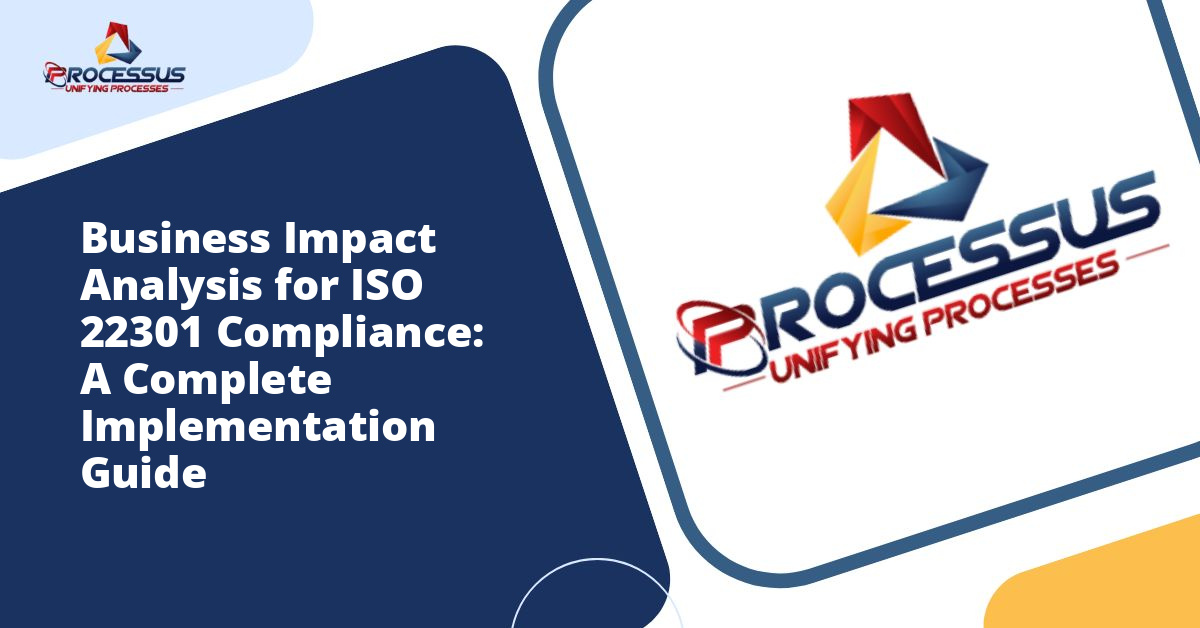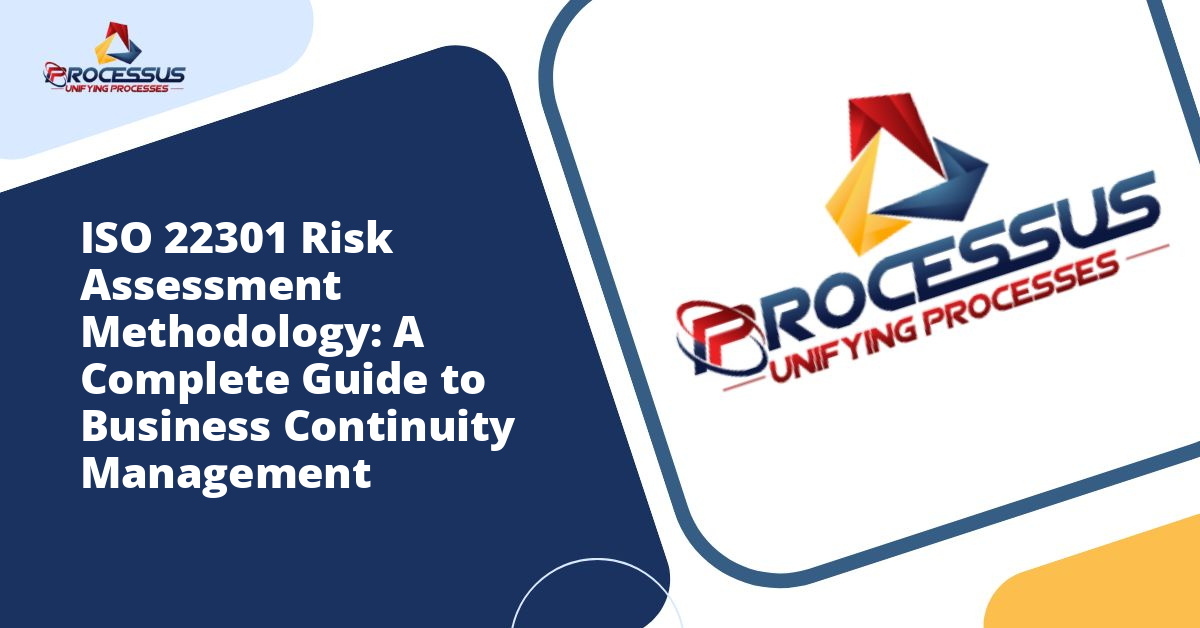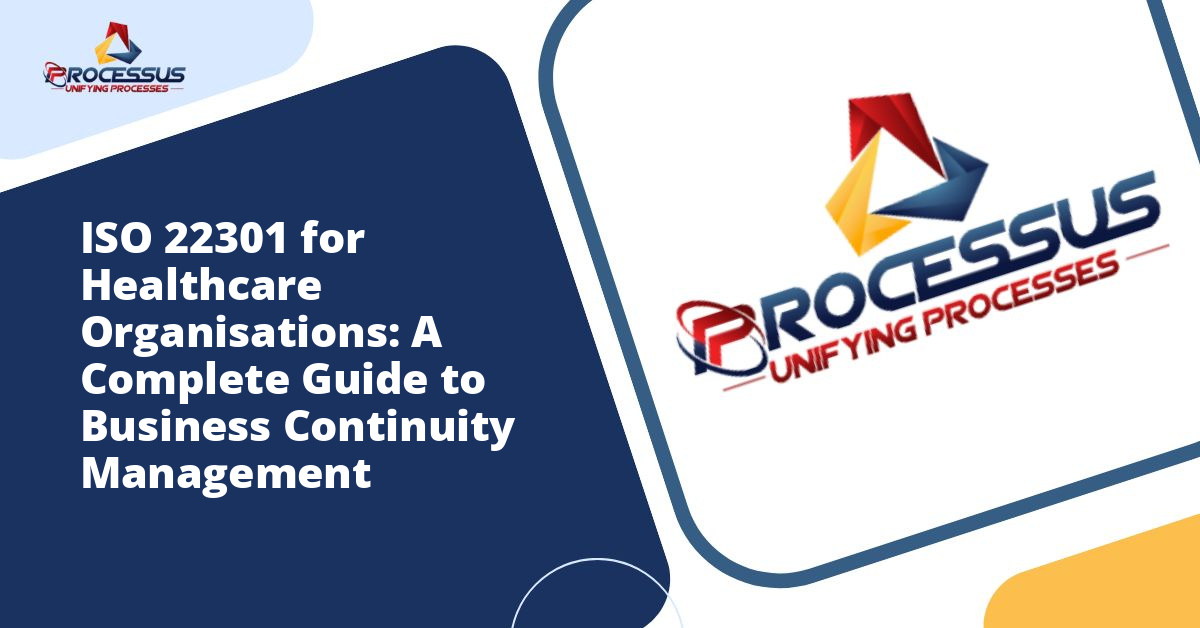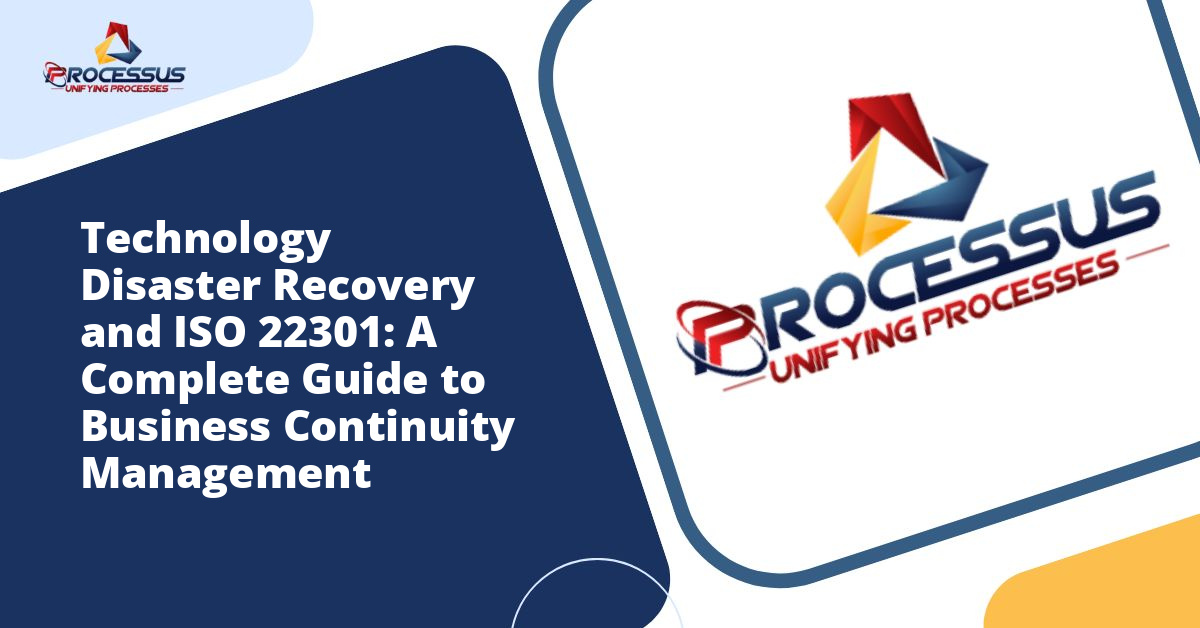In today’s interconnected business environment, organizations face an ever-growing array of threats that can disrupt operations, from natural disasters and cyberattacks to supply chain failures and pandemics. The ability to continue critical business functions during and after such disruptions has become essential for organizational survival and competitive advantage. This is where ISO 22301, the international standard for Business Continuity Management Systems (BCMS), provides a structured framework for resilience. At the heart of ISO 22301 compliance lies the Business Impact Analysis (BIA), a fundamental process that helps organizations understand their vulnerabilities and prioritize recovery efforts.
Understanding Business Impact Analysis in the Context of ISO 22301
Business Impact Analysis is a systematic process that identifies and evaluates the potential effects of disruptions on business operations. Within the ISO 22301 framework, BIA serves as the foundation upon which all business continuity planning is built. It provides the evidence-based insights necessary to make informed decisions about resource allocation, recovery strategies, and risk mitigation efforts. You might also enjoy reading about ISO 22301 Business Continuity Plan Development: A Complete Guide for Organizations.
The primary purpose of conducting a BIA is to understand which business functions are most critical to organizational success and what the consequences would be if these functions were interrupted. This understanding enables organizations to establish appropriate recovery time objectives, recovery point objectives, and minimum business continuity objectives that align with overall business strategy and stakeholder expectations.
ISO 22301 requires organizations to conduct a BIA as part of their business continuity management planning. The standard emphasizes that this analysis must be comprehensive, documented, and regularly reviewed to remain relevant in the face of changing business environments and emerging threats.
The Strategic Importance of BIA for Business Continuity
Conducting a thorough Business Impact Analysis delivers significant strategic value beyond mere compliance with ISO 22301. Organizations that invest time and resources in comprehensive BIA processes gain a deeper understanding of their operations, dependencies, and vulnerabilities that can inform broader business decisions.
From a financial perspective, BIA helps quantify the potential costs of disruptions, including lost revenue, regulatory penalties, recovery expenses, and reputational damage. This financial clarity enables executives to justify investments in business continuity measures and make risk-informed decisions about acceptable levels of exposure.
Operationally, BIA reveals the intricate web of dependencies that exist within modern organizations. It identifies critical suppliers, key personnel, essential technologies, and vital business processes that must be protected or for which alternatives must be developed. This visibility allows organizations to address single points of failure before they result in catastrophic disruptions.
Key Components of an Effective Business Impact Analysis
A comprehensive BIA that meets ISO 22301 requirements includes several essential components. Each element contributes to building a complete picture of organizational resilience needs and recovery priorities.
Activity and Function Identification
The first step in conducting a BIA involves creating a comprehensive inventory of all business activities and functions. This goes beyond simple organizational charts to examine the actual work being performed, the outputs being generated, and the value being created. Organizations must identify both customer-facing functions and supporting activities that enable operations.
This identification process should involve stakeholders from across the organization, including operations, finance, human resources, information technology, and customer service. Each department may have unique perspectives on what constitutes critical activities and how different functions interact and depend on one another.
Impact Assessment
Once activities and functions have been identified, the next phase involves assessing the potential impacts if these activities were disrupted. ISO 22301 requires organizations to consider multiple dimensions of impact, including financial consequences, operational effects, legal and regulatory implications, reputational damage, and stakeholder concerns.
Financial impacts typically include direct revenue loss, cost of recovery, contractual penalties, and lost business opportunities. Operational impacts might involve reduced capacity, quality issues, safety concerns, or inability to meet customer demands. Legal and regulatory impacts could range from compliance violations to litigation risks. Reputational impacts often prove the most difficult to quantify but can have the longest-lasting effects on organizational viability.
The assessment should consider how impacts evolve over time. A disruption that causes minimal impact in the first few hours might become catastrophic if it extends to days or weeks. This temporal dimension helps organizations establish appropriate recovery time objectives for different activities.
Dependency Analysis
Modern business operations rely on complex networks of internal and external dependencies. A thorough BIA must identify and document these relationships to understand how disruptions might cascade through the organization.
Internal dependencies include relationships between business units, shared resources, common infrastructure, and personnel with specialized skills or knowledge. External dependencies encompass suppliers, service providers, utilities, telecommunications, transportation networks, and partner organizations.
Technology dependencies deserve special attention in today’s digital business environment. Organizations must understand which systems support which business functions, how data flows between applications, and what alternatives exist if primary systems become unavailable. Cloud services, while offering resilience benefits, also introduce dependencies on internet connectivity and third-party providers that must be considered.
Recovery Requirements Determination
Based on the impact assessment and dependency analysis, organizations must establish recovery requirements for each critical function. These requirements form the foundation for developing business continuity strategies and plans.
Recovery Time Objective (RTO) represents the maximum acceptable time period within which a business function must be restored after a disruption. Different functions will have different RTOs based on their criticality and the rate at which impacts accumulate. Some functions might require recovery within hours, while others could tolerate days or weeks of interruption.
Recovery Point Objective (RPO) defines the maximum acceptable age of data that must be recovered for a business function to resume operations. This is particularly relevant for information-dependent processes and helps determine backup frequency and data replication strategies.
Minimum Business Continuity Objective (MBCO) specifies the minimum level of service or product delivery required to achieve business objectives during a disruption. This helps organizations plan for scenarios where full recovery is not immediately possible and operations must continue at reduced capacity.
Conducting a Business Impact Analysis: Step-by-Step Process
Implementing an effective BIA requires a structured approach that ensures comprehensive coverage while engaging relevant stakeholders throughout the organization.
Planning and Preparation
Success begins with proper planning. Organizations should define the scope of the BIA, identifying which business units, locations, and functions will be included. The project team should be assembled with representatives who understand different aspects of the business and have the authority to gather necessary information.
Developing a clear methodology and documentation approach ensures consistency throughout the analysis. This includes creating templates for data collection, establishing criteria for assessing impacts and criticality, and defining the process for reviewing and validating findings.
Data Collection
Gathering accurate and comprehensive information represents one of the most challenging aspects of conducting a BIA. Multiple data collection methods should be employed to ensure complete coverage and validate findings through triangulation.
Interviews with key personnel provide qualitative insights into business processes, dependencies, and potential impacts. These conversations often reveal informal workarounds, undocumented relationships, and practical considerations that might not appear in formal documentation. Questionnaires and surveys can efficiently gather standardized information from a large number of respondents, though they may lack the depth and nuance of interviews.
Document review helps verify information gathered through other methods and provides objective data about processes, systems, and dependencies. Relevant documents might include process maps, system documentation, organizational charts, contracts, and historical incident reports.
Workshops bringing together cross-functional teams can be particularly effective for understanding complex dependencies and validating preliminary findings. These collaborative sessions often generate insights that individual interviews might miss and help build organizational consensus around priorities and recovery requirements.
Analysis and Evaluation
Once data has been collected, the analysis phase involves synthesizing information to identify critical functions, assess potential impacts, and establish recovery priorities. This typically involves both qualitative judgment and quantitative analysis.
Impact data should be analyzed across multiple dimensions and time horizons to understand how disruptions might affect the organization. Financial modeling can help quantify potential losses and recovery costs. Risk assessment techniques can be applied to understand the likelihood of different disruption scenarios.
Criticality classification provides a framework for prioritizing business functions based on their importance to organizational objectives and the severity of impacts if disrupted. Common approaches include ranking systems, scoring models, or tiered classifications that group functions into categories such as critical, essential, and non-essential.
Documentation and Reporting
ISO 22301 emphasizes the importance of documented information throughout the business continuity management system. The BIA report should provide a clear, comprehensive record of the analysis process, findings, and conclusions.
Effective BIA documentation includes an executive summary highlighting key findings and recommendations, detailed analysis results showing impacts and dependencies for each business function, established recovery requirements including RTOs, RPOs, and MBCOs, and identification of gaps between current capabilities and recovery requirements.
The report should be accessible to different audiences, with technical details available for those implementing recovery strategies while providing executive summaries for senior leadership. Visual aids such as charts, graphs, and process maps can help communicate complex information more effectively.
Validation and Approval
Before the BIA results are used to inform business continuity planning, they should be validated through review by relevant stakeholders. This includes verifying the accuracy of data, confirming that impact assessments reflect actual business priorities, and ensuring that recovery requirements are realistic and achievable.
Senior management approval provides the authority necessary to implement recommendations and allocate resources for business continuity initiatives. This approval also demonstrates the organizational commitment to business continuity that ISO 22301 requires from top management.
Common Challenges in Conducting Business Impact Analysis
Organizations frequently encounter obstacles when conducting BIA that can compromise the quality and usefulness of results. Understanding these challenges helps in developing strategies to address them proactively.
Stakeholder Engagement
Securing adequate time and attention from busy operational personnel can be difficult. Business leaders may view BIA as a compliance exercise rather than a value-adding activity, resulting in superficial participation or delegating interviews to individuals without sufficient knowledge.
Overcoming this challenge requires clear communication about the strategic value of BIA and how it supports business objectives. Demonstrating executive support and framing the analysis as an opportunity to secure resources for operational improvements can increase engagement.
Data Quality and Completeness
Organizations often lack documented information about processes, dependencies, and system configurations. Subject matter experts may have difficulty articulating recovery requirements or quantifying potential impacts, particularly for intangible factors like reputational damage.
Addressing data quality issues requires patience, multiple data collection methods, and validation techniques. Starting with readily available information and progressively building depth through iterative refinement can be more effective than attempting to gather perfect data in a single pass.
Balancing Detail and Practicality
There is a natural tension between conducting a comprehensive analysis that captures all relevant details and completing the BIA within reasonable time and resource constraints. Organizations can become mired in excessive detail that adds little value or conversely conduct superficial analysis that fails to identify critical dependencies.
Finding the right balance requires clear scope definition, risk-based prioritization that focuses detailed analysis on the most critical areas, and pragmatic acceptance that the BIA is a living document that can be refined over time rather than a one-time perfect analysis.
Integrating BIA Results into Business Continuity Planning
The true value of Business Impact Analysis emerges when its findings are effectively integrated into broader business continuity management activities. The BIA provides the foundation for developing recovery strategies, writing business continuity plans, and allocating resources to resilience initiatives.
Recovery strategies should directly address the priorities and requirements identified through BIA. For critical functions with short RTOs, organizations might implement redundant systems, alternative facilities, or cross-training programs. Less critical functions might rely on simpler recovery approaches that balance cost against impact tolerance.
Resource allocation decisions should reflect the criticality assessments and impact analysis from the BIA. Investment in prevention, mitigation, and recovery capabilities should be proportional to the potential impacts and the importance of protected functions to organizational objectives.
Business continuity plans must be designed to achieve the recovery objectives established through BIA. Plan activation criteria, response procedures, and recovery sequences should all align with the understanding of criticality and dependencies developed during the analysis.
Maintaining and Updating the Business Impact Analysis
ISO 22301 requires that the Business Impact Analysis be regularly reviewed and updated to ensure it remains accurate and relevant. Organizations change constantly through growth, restructuring, new technologies, changed processes, and evolving market conditions. A BIA that accurately reflected organizational priorities at one point in time can quickly become outdated.
Establishing a regular review cycle ensures the BIA remains current. Many organizations conduct comprehensive BIA updates annually, with more frequent reviews of critical areas or following significant organizational changes. Triggers for interim updates might include mergers and acquisitions, new product launches, major system implementations, significant regulatory changes, or lessons learned from actual disruptions or exercises.
The review process should reassess impact levels, verify that dependencies remain accurate, confirm that recovery requirements still reflect business needs, and identify any new critical functions or changed priorities. This ongoing maintenance transforms the BIA from a static compliance document into a living tool that continually informs business continuity decisions.
Measuring Business Impact Analysis Effectiveness
Organizations should establish metrics to evaluate whether their BIA processes are delivering intended value. Effectiveness measures might include comprehensiveness of coverage across business functions, accuracy of impact assessments compared to actual incidents, stakeholder satisfaction with the BIA process, alignment between BIA findings and business continuity investments, and improvement in recovery capabilities for critical functions.
Regular assessment against these metrics helps identify opportunities for process improvement and demonstrates the value of BIA activities to organizational leadership. Continuous improvement should be embedded into the BIA methodology, incorporating lessons learned from each iteration and adapting approaches based on what works well and what could be enhanced.
Conclusion
Business Impact Analysis represents a critical component of ISO 22301 compliance and effective business continuity management. By systematically identifying critical functions, assessing potential impacts, understanding dependencies, and establishing recovery requirements, organizations build the foundation for resilience in an uncertain world.
While conducting a thorough BIA requires significant investment of time and resources, the insights gained provide value far beyond compliance. Organizations develop deeper understanding of their operations, make more informed risk decisions, and build confidence among stakeholders that disruptions can be managed effectively.
Success in BIA requires commitment from leadership, engagement from stakeholders throughout the organization, structured methodology, and ongoing maintenance to keep findings current. Organizations that approach BIA as a strategic activity rather than merely a compliance exercise position themselves to navigate disruptions successfully and emerge stronger from challenges.
As business environments continue to evolve and new threats emerge, the importance of understanding business impacts and building appropriate resilience will only increase. Organizations that invest in comprehensive Business Impact Analysis today are building the foundation for sustainable success regardless of what disruptions tomorrow may bring.







